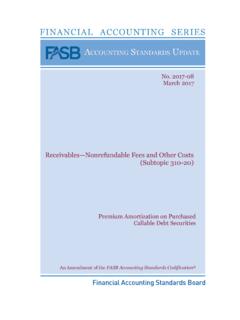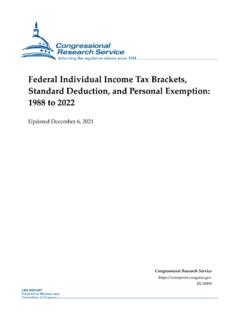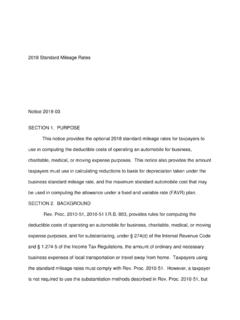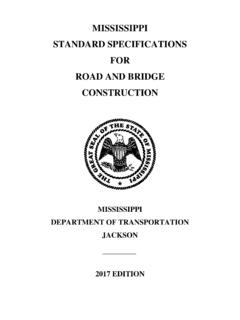Transcription of Measuring handgrip strength Standard Operating Procedure
1 Standard Operating Procedure handgrip strength Measuring handgrip strength Standard Operating Procedure Version 2 10/4/ 2017 Authors: Jacqueline Langius, Wesley Visser, Hinke Kruizenga, Nel Reijven Aim: Inventarisation or evaluation of maximum handgrip strength Population: Adults and children above 5 years of age Time: Approximately 5 minutes Standard Operating Procedure handgrip strength 1 Contents 1. Objective of the measurement .. 2 2. Abbreviations and definitions .. 2 2. Background information .. 2 3. Population .. 2 4. Safety and environmental issues .. 2 Safety issues .. 2 Environmental issues.
2 2 5. Description of the measurement device .. 3 6. Cleaning and 3 Cleaning .. 3 Maintenance .. 3 7. Performing the test .. 3 Materials needed .. 3 Preparation .. 4 Performing the measurement .. 4 Processing of the results .. 5 Calculation .. 5 Registration .. 5 5 8. Methodological quality .. 6 Validity .. 6 Reliability .. 6 References .. 7 Appendix 1: Reference values according to R. Dodds et al. [2] .. 8 Standard Operating Procedure handgrip strength 2 1. Objective of the measurement This SOP describes a method for the evaluation of the maximum handgrip strength using a hand dynamometer.
3 2. Abbreviations and definitions Participant Person who is measured Tester Person who performs the measurement 2. Background information The hand dynamometer can be used for Measuring maximum handgrip strength . The maximum handgrip strength is a good reflection of the muscle function of the hand and forearm and is correlated with total muscle mass. The measured maximum handgrip strength has to be compared with reference values. handgrip strength is age and gender specific. It can also be affected by other factors, like diseases. In this document, a standardized method is described for the measurement of the maximum handgrip strength by a hand dynamometer.
4 Furthermore, reference values are given for different age groups. 3. Population The maximum handgrip strength can be measured by a hand dynamometer in adults and children above 5 years of age. 4. Safety and environmental issues Safety issues Risk class: none. No specific requirements are defined for training of the handgrip strength measurement. Environmental issues Not applicable Standard Operating Procedure handgrip strength 3 5. Description of the measurement device The two most used hand dynamometers are JamarTM and Baseline. Both types of these Hand Dynamometers are held by the participant without support.
5 The handle of the device is adjustable to different hand sizes (Fig. 1). For the Jamar dynamometer this varies from cm ( inch) to cm ( inch) with intermediate steps of cm ( inch). For the In Baseline dynamometer the adjustable handgrip varies from ( inch) to cm ( inch). The weight of the baseline device is oz. / 638 gram. Both devices are available in analogue and digital versions. The analogue device measures in pounds (lbs; inner circle) and kilograms (kg; outer circle) with a maximum of 200 lbs or 90 kg. The special peak-hold needle is used for reading of the test results. This needle stays in the highest position until the tester manually resets it to zero.
6 The digital devices have the same characteristics as the analoge devices., The result can be read from the digital screen where the highest measured value is displayed. Fig. 1. JamarTM Hand Dynamometer 6. Cleaning and maintenance Cleaning Before use, the handgrip dynamometer should be cleaned with alcohol tissues. Maintenance The device has been calibrated by the manufacturer. It is necessary to calibrate the device once a year by the manufacturer or by the technical service ward. When the dynamometer has fallen down the accuracy is no longer guarantied, the device needs to be calibrated before using it again.
7 7. Performing the test Materials needed - Hand Dynamometer - Chair without armrest - Data form, digital or on paper (example in attachment 1) Standard Operating Procedure handgrip strength 4 Measurement Procedure Preparation - Give the participant the following instructions: I want to measure your hand grip strength . You can sit down and bend your underarm to an angle of 90 degrees. Your arm is not allowed to touch the trunk. Your shoulders should be relaxed. When I say squeeze , you have to squeeze as hard as you can until I say stop. You can not feel any replacement of the handles, the strength of your grip is displayed on the meter.
8 The measurement will be repeated two times. After each measurement the muscles are allowed to relax for a while. If you experience pain or any discomfort we will not continue the measurement. - Demonstrate the measurement ones and show the participant how the pinch needle works or how the reading of the digital scale increases with increasing strength . - Ask if there are any physical limitations of the hand that might affect the grip strength . - Ask the participant if there are remaining questions regarding the measurement. Performing the measurement - The participant needs to sit up straight and relax; For the Standard measurement this means sitting down without resting/holding on to something.
9 If this is not possible in a clinical situation, the measurement can be done in a standing or supine position. If repeated measurements are required make sure to measure participants always in the same position. Any deviation from the Standard Procedure has to be written down. - Ask the participant to hold his/her arm in a 90 degree angle. The wrist needs to be in a neutral position, this means with the thumb on the top. - Show the participant how the handgrip dynamometer works by demonstrating that a tight hold is needed and a squeeze as hard as possible for a valid result. - When an analogue handgrip dynamometer is used, make sure the needle is set at zero before starting the measurement.
10 - Adjust the width of the handle of the dynamometer to the size of the participant s hand in such a way that it feels comfortable. For the required grip the middle finger bone (phalanx) of the middle finger needs to be positioned in an angle of 90 degrees while covering the handle. Let the participant try the handgrip dynamometer first with the left and then with the right hand, write the preferred handle position down on the test form. For repeated measurements always use the same individual handle position. The handle position can influence the outcome of the measurement. - Turn the peak-hold needle of the handgrip dynamometer to zero.





